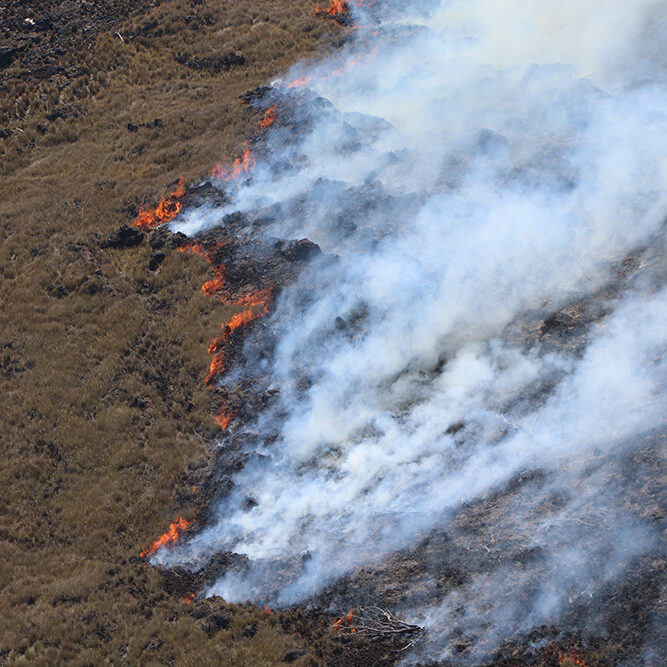Connecting Research to On-the-Ground Wildfire Priorities
PFX strives to serve the needs of wildfire practitioners, island communities and landscapes by working with our partners to identify and pursue relevant science and research across the Pacific region.
2014 Stakeholder Priorities
In 2014, wildfire stakeholders prioritized knowledge about pre-fire management; prevention, outreach, and education; wildland urban interface; after-fire response; wildfire suppression; collaboration; drivers and impacts of wildfire and the use of technologies. These priorities provided a road map for PFX products and activities and a resource to identify and develop research that meets on-the-ground needs (right). Read more here about these stakeholder priorities.
Current Wildfire Research Needs
PFX engages in many questions concerning the relationship of fire to the natural and built (human) environment. This include understanding how the climate crisis is impacting fire outcomes in the Pacific. In addition, building a better understanding of the social, cultural, economic and human dimensions of fire are critical Pacific Island research needs.
Do You Have a Great Idea You'd Like to Pursue?
Check Out Our Research Library
Recent Resources for Researchers
Fountain grass is an invasive, highly flammable ornamental plant that has overtaken the dry, tropical ecosystems of west Hawaii. Over the last several decades, large, fast spreading fountain grass fires have burned across the landscape with increasing frequency, usually ignited by roadside activities in remote areas. The Pu’u Anahulu Fuels Management Project evaluated the effectiveness of different roadside fuels treatments on fountain grass using a collaborative approach, and allowed the first use of science-based fuels treatments and prescribed fire in Hawaii. Demonstration sites were established along roadsides where ignitions were known to occur. The clear winner for sustained reduction of fountain grass was a three stage application of prescribed fire, grazing and herbicide.
This project was developed and carried out by SWCA Environmental Consultants (SWCA) to determine the effectiveness of three different methods in reducing the surface fuel loads in a guinea grass (Panicum maximum) dominated community, thereby reducing susceptibly to sustained fires. Three control treatments were tested including mechanical removal, herbicide application and grazing using cattle to reduce the fuel loads at Marine Corps Training Area Bellows (MCTAB), on the island of O‘ahu, Hawai‘i. Information on the cost of the various control treatments and their long-term effectiveness in maintaining reduced fuel loads would also benefit land and resource managers in the Pacific Islands where guinea grass and frequent fires are problematic.
Authors Hanna L. Mounce, Fern Duvall and Kirsty J. Swinnerton consider the effects of a massive brush fire in January 2007 on the endangered ‘Alauahio forest bird population in Polipoli including possible effects on foraging, breeding and reproduction.









